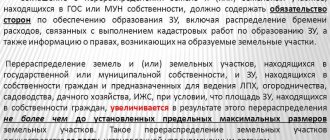What is a trademark
A trademark is a verbal or graphic designation that distinguishes the goods and services of one company from the goods and services of others (Article 1477 of the Civil Code of the Russian Federation). Like a business card, only with legal guarantees - it increases recognition, distinguishes it from competitors and protects products from counterfeiting.
But for the protection to work, the trademark must be registered with Rospatent. Whoever does this first will become its copyright holder (Article 1484 of the Civil Code of the Russian Federation). That is, he will be able to write the registered designation on a sign, print it on packaging or depict it on a business card. And competitors will be prohibited from doing this.
Online service for trademark registrations
For example, 1C is a registered trademark. It can only be used by the copyright holder. If someone else places this designation in their advertising without permission, they will be violating the company's exclusive right. Then the copyright holder can prepare a lawsuit and sue the violator for a large sum. We'll talk about all the possible consequences and rights of the owner a little later.
How to draw up an agreement for short-term use?
A documented agreement between the parties will help to avoid the possibility of receiving a claim or lawsuit from the copyright holder.
How to negotiate with the copyright holder?
You must send a written request to the name and address of the copyright holder about the possibility of granting rights to use the trademark and wait for a response.
Reasons for receiving
Important. The basis for obtaining permission to use someone else's logo is the need for its short-term use.
The person requesting permission must act on behalf of a legal entity or as an individual entrepreneur.
Features of the document
The letter of consent must be drawn up on the organization’s letterhead , indicating the registration details of the designation, the list of goods and services that will be marked with it, the details of both parties and the signature of the person giving consent. In addition, it is worth indicating whether this agreement is gratuitous or the amount of remuneration, as well as the validity period of the right to use the trademark, which does not go beyond the scope of the exclusive right to it.
We do not recommend completing the documents yourself. Save time - contact our lawyers by phone:
8 (800) 302-76-94
Expenses
It is difficult to predict what amount of remuneration the copyright holder of a trademark will require for the right to use. Each case is individual and is resolved through negotiations. INFORMATION! It is quite possible to obtain consent free of charge if you approach the negotiations responsibly and professionally.
How does a trademark differ from a trademark and a brand?
Usually these concepts are used as synonyms. They have a lot in common, but they are not identical.
A trademark is an official concept from the law. It is usually used by lawyers, accountants and managers. The trademark has a marking - the ®️ icon. It is impossible to draw such a trademark without registration with Rospatent. Those who label goods without registration are at great risk. You can get a fine or even correctional labor (Part 2 of Article 180 of the Criminal Code of the Russian Federation).
A trademark is an unofficial synonym for a trademark. The trademark also has a marking - ™, an abbreviation for the English trademark. In Russia, it is not regulated in any way by law and does not provide any protection.
Brand is a broader and more abstract concept that is commonly used by marketers. It includes a whole range of intangible assets: various trademarks, business reputation, established connections, the mental shell of the product, consumer loyalty and much more. There is a whole material about this.
What is considered illegal use of markings?
Protection of brand rights includes several criteria that characterize the crime. There are direct types of unlawful use of the logo and veiled ones. The veiled use of a trademark is otherwise called the degree of confusion. Such an offense requires a thorough assessment by an expert.
A direct violation is the labeling of one’s own products with someone else’s trademark. The law compulsorily requires the removal of registered marks from goods, the destruction of packaging at the expense of the offender, and the application of measures for the illegal use of someone else's brand.
How a trademark protects a business from competitors
Collection of compensation. The one who comes up with and registers the original name in Rospatent receives all rights to it. If competitors begin to depict a registered or similar trademark without permission, the entrepreneur will be able to prepare and file a claim for 5 million rubles at once (Article 1515 of the Civil Code of the Russian Federation).
Compensations in the millions are rare. Typically, courts award copyright holders amounts of several hundred thousand rubles. For example, one nail salon was forced to pay 600 thousand rubles, and it went bankrupt. And they took pity on the online store selling jeans and charged only 100 thousand rubles.
But compensation is not the only punishment. There is a whole range of sanctions for the violator.
Destruction of counterfeit goods . All products, labels, packaging that bear the designation of someone else’s registered trademark are counterfeit. If you ask the court about this, it will force the owner to destroy them. Even if this is all the products in the store or warehouse.
Removing trademarks from materials . The violator is prohibited from using someone else's registered designation anywhere. According to the court's decision, he will be required to remove the sign and remove the trademark from all advertising materials and document forms. For example, if a person drew your trademark on a business card, you can seize and destroy all the business cards.
Withdrawal of a website domain . The monopoly of the copyright holder also applies on the Internet. Only the owner of the trademark is allowed to name the site by his own name. For example, a website with the domain “saucony.ru” can only be used by the company that owns the “SAUCONY” designation. If some entrepreneur writes this registered trademark in the domain name, the site can be taken away. SAUCONY Inc did just that. She also collected 300 thousand rubles from the violator.
Compensation for damages . This is an alternative to compensation. It is advantageous to choose it in two cases:
- when the violator illegally placed a trademark on an entire batch of products, he must pay double the cost of this batch;
- when the owner sells an expensive franchise, the violator must pay double the cost of this franchise.
It is impossible to apply both forms of protection at the same time - compensation and compensation. Usually lawyers first consider what is more profitable, and then prepare a claim.
Prohibition of contextual advertising on the Internet . According to the terms of the Google Ads and Yandex.Direct platforms, advertisers are not allowed to place ads that violate the intellectual rights of others. For example, if someone posted an ad with the text “better than on Avito,” this violates the rights of Avito Holding AB. In such cases, the company writes a complaint to Google and Yandex, and usually the ad is removed.
Review of Russian judicial practice
In Russian judicial practice, there are different approaches to the liability of marketplaces for violation of exclusive rights. Until recently, the courts did not see any problems in holding the marketplace liable for violation of an exclusive right. However, they did not ask the question whether he was an information intermediary or not.
First of all, in the aspect under consideration, the ruling of the RF IP in the case of LLC “Veksel” versus LLC “Kupishuz” (a division of Lamoda) is of interest. Veksel LLC, the copyright holder of the HIGHLANDER trademark, filed a claim against Cupishuz LLC for the protection of exclusive rights and recovery of compensation in the amount of 5 million. The plaintiff proceeded from the fact that the defendant violated the exclusive right of the copyright holder by using the HIGHLANDER designations on the pages of the website www.lamoda. ru by demonstrating and offering for sale footwear marked with such a designation. The court of first instance rejected the claim due to the fact that the copyright holder abused his rights. The appeal partially satisfied the demands - in the amount of 50 thousand rubles. In reducing the claimed compensation, the court proceeded from the fact that the copyright holder himself did not use the trademark in relation to the shoes. The Intellectual Property Rights Court upheld the cassation decision. The issue of the nature of liability of Kupishoe LLC and its relevance to information intermediaries was not considered by the courts.
In a recent dispute, the court recovered significant compensation by Russian standards (RUB 2,051,806) from Internet Solutions LLC (Ozon marketplace) for violating the exclusive copyright of the work of fine art “Zhdun”. The courts found that on the website www.ozon.ru. soft toys were sold - images of Zhdun. The toy manufacturer, Aspect LLC, was involved in the dispute as a third party.
In the case of Dives LLC (copyright holder) versus Internet Solutions LLC (Ozon online store) and SORSO-STR LLC, the court found both the marketplace and a specific seller to be violators of the exclusive rights to an industrial design (a structure for animals). The courts found that the defendants posted information on the Internet (on the Ozone website) about goods whose appearance was identical to the named industrial designs.
In case A40-302888/19, the courts of first and appellate instances directly pointed out the joint and several nature of the liability of the marketplace and the seller of the goods. The plot of the case is as follows. IP Tatintsyan K.Ya. filed a claim against Zaslavskaya Confectionery Factory LLC (Rep. Belarus) (defendant 1), VALLAR LLC (defendant 2), WILDBERRY LLC (defendant 3) for violation of the exclusive rights to the LAFINEL trademark. The courts found that defendant 1 is a manufacturer of goods (wafer rolls) labeled Lafinele with the indication “Lafinel”. Defendant 2 sells these goods through the website of defendant 3. Due to the fact that defendant 1 carries out production activities on the territory of Belarus, the court refused to satisfy the claims against him. At the same time, the court jointly and severally recovered compensation in the amount of 200 thousand rubles. from defendants 1 and 2, admitting that they jointly violated the exclusive right of the entrepreneur to the trademark. At the same time, the courts did not apply the rules on information intermediaries to the marketplace.
Meanwhile, in judicial practice one can find disputes in which the courts have defined the marketplace as an information intermediary. First of all, in this aspect, the ruling of the Intellectual Rights Court dated December 23, 2021 in case No. A40-214785/2019 is of interest. “The manager filed a claim against Delivery Club LLC to declare illegal the defendant’s use of photographs (images) of rolls, the exclusive rights to which belong to the plaintiff; recover compensation from the defendant for violation of the plaintiff’s exclusive rights in the amount of 320 thousand rubles.
The courts of three instances came to the conclusion that the defendant was not the initiator of the posting of the controversial photographs on the Delivery Club service website, since he served as an information intermediary. In particular, the courts found that the links https://vlg.delivervclub.ru/srv/vasabi vlg/tflstorichjeskaja/ and https://vlg.deliverv-club.ru/srv/SushiLavkavlg/#ul contain cards of partner restaurants "Delivery Club" society - the "Wasabi" restaurant (IP Sogomonyan S.A.) and the "SushiLavka" restaurant (IP Skazkopodatelev N.A.), with materials presented by the partners themselves, with whom the "Delivery Club" society has concluded agreements.
The courts proceeded from the fact that Delivery Club, due to the specific functionality of the service, cannot and does not check the presence/absence of partners’ rights to trademarks, photographic images and other intellectual property. Therefore, the defendant does not know and cannot know about this or that violation of the rights of third parties. It is the defendant’s partners who independently form the menu of their restaurant, the range of dishes, their descriptions, prices, and add photographs and images that must be placed on the restaurant card in the Delivery Club service system.
The defendant complied with the set of conditions for exemption from liability as an information intermediary, provided for in paragraph 3 of Art. 1253.1 Civil Code of the Russian Federation. The fact that the site https://www.delivervclub.ru/ belongs to the Delivery Club society does not exclude its status as an information intermediary in relation to the service located on the specified site.
The courts emphasized that the defendant, for his part, is responsible for independently posted (used) content within the site https://www.deliverv-club.ru/ (for example, site design elements). However, in connection with the placement of affiliate content within the service, such liability is excluded. In the case under consideration, the initiator of the placement of controversial photographs on the site is the defendant’s partners. It is also clear from the case materials that the defendant did not know and should not have known about the partners’ misuse of the controversial material.
Why else do you need a trademark?
Prohibition of import of counterfeit goods . Customs officers have a special register of intellectual property in which you can enter your trademark. Then customs will check all imported goods and look for this sign in the labeling. When he finds it, he will ask the importer for permission from the copyright holder. If there is no permission, the goods will not be allowed through, and a protocol will be drawn up against the importer. Almost 5 thousand Mickey Mouse firecrackers were recently confiscated from one importer.
Franchise launch . To sell a franchise, a company needs a registered trademark. When it is not there, then there is nothing to transfer under the franchise agreement. Those who launch a franchise without registering a trademark or sell other people's names are at great risk - the buyer can prepare a lawsuit and compensate for the losses caused. One individual entrepreneur did just that. He bought a franchise, and then found out that the seller did not have the right to do so. The buyer filed a lawsuit and sued the company for more than 3 million rubles in compensation.
Balancing . A trademark is an intangible asset that is placed on the balance sheet. This increases the value of the business and attracts investors. It is no coincidence that every year the number of registered technical specifications increases.
Selling goods in marketplaces . Typically, trading platforms such as Lamoda and Ozone warn sellers about the ban on selling counterfeit goods. For example, Lamoda requests information from sellers about the trademark for products even before starting work. A lawsuit filed against the marketplace forced them to take such measures. The Highlander company found other people's goods on the site under its trademark and went to court. The first time, Lamoda got away with only 50 thousand rubles. But to prevent this from happening again, the site is now checking all contractors.
Lending secured by the state program . Russia has a national program to support small and medium-sized businesses. As part of this program, some banks lend to small and medium-sized enterprises secured by intangible assets, including trademarks, at preferential rates - in 2021 this is 7% per annum. This is still very rare - in September 2021, the first such loan was issued in the history of Russia. But if there is nothing else to pawn, and you need money, it’s worth a try.
Rules governing the issue
Several sections of Russian law regulate the issue of illegal use of a trademark. The degree of responsibility will depend on the qualifications of the case.
Responsibility for illegal use of a brand according to the Civil Code of the Russian Federation implies the right of the copyright holder to demand withdrawal from circulation of the product and destruction. In addition, packaging and labels are subject to seizure. This regulation is enshrined in Art. 1515 of the Civil Code of the Russian Federation.
The offense is also regulated by the Code of Administrative Offenses of the Russian Federation, Article 14.10. According to this article, the copyright holder can file a statement with the police to initiate a case. The liability of the violator according to the Code for legal entities ranges from 30 to 40 thousand rubles, and for an official from 10 to 20 thousand rubles. The statute of limitations for this violation is one year.
If a serious offense occurs, then legal proceedings are allowed within the framework of the Criminal Code of the Russian Federation, namely Article 180.
An offense will be considered criminal if the illegal use of the brand has occurred repeatedly or resulted in large losses. A major loss is considered to be damage in the amount of 250 thousand rubles.
What trademarks are usually registered?
There are trademarks, and there are service marks. In fact, it's the same thing. The difference is that goods are labeled first, and services are labeled second. There are no fundamental differences, so the concepts are usually identified.
A verbal, graphic, color, font or other combined element can be registered as a trademark (Article 1482 of the Civil Code of the Russian Federation). Typically businesses only use words and logos, but there are options. For example, smell or even sound is used as a means of individualization.
There is no exhaustive list of possible trademarks. But an approximate list of possible ones can be found in the Rules for Registration of Trademarks (Order of the Ministry of Economic Development No. 482 of July 20, 2015). Let's look at the main examples of what a trademark can be.
| View | Description | Example |
| Verbal | Words, letter and phrase combinations, font compositions: name of company, media, store, slogan, website domain, hashtag, etc. | |
| Graphic | Logo, picture, character, label design, emblem, packaging, any other abstract compositions | |
| Combined | Word + image, emblem | |
| Volume | Figures and combinations of lines in space - illustration of a product, its packaging, character, other unique three-dimensional image | |
| Sound | Sounds, vocal and instrumental fragments, parts of works, screensavers of film companies and programs | |
| Color | An original color, a separate shade or a combination of both. For example, the corporate color of MTS (red, Pantone 485) is a registered trademark | |
| Tactile | Tactile-sensory unique symbols, including symbols in Braille | |
| Olfactory | Perfume scent, point of sale aroma | |
| Positional | A logo placed on a specific place on a product. For example, Adidas places branded stripes on the strap of its flip-flops - |
What trademarks cannot be registered?
Not all designations can be registered with Rospatent. Before registration, experts evaluate what fundamentally distinguishes a trademark, whether it is confusingly similar to previously registered designations. They also check whether the declared name or logo is subject to prohibitions. And if yes, they send a refusal.
A complete list of reasons for which they may be refused is collected in Art. 1483 Civil Code of the Russian Federation. There are many points and complex wording - only a lawyer can figure it out. To make it easier, we will consider only the obvious reasons.
| Grounds for refusal | Description of the trademark | Example |
| Lack of distinctiveness | Common usage of the name | |
| General acceptance of the symbol | ||
| Product characteristics | ||
| Repetition of product shape or properties | ||
| Simple combination of letters | Abbreviations that have no verbal or graphic expression. The use of stylized letter combinations is acceptable | |
| Use of official symbols | Flags, emblems, coats of arms of states, organizations, associations, unions | |
| Falsehood, misrepresentation | A designation that deceives or may deceive the consumer about quality, place of production or manufacturer | |
| Contradiction with social principles, humanity and morality | Placement of anti-state expressions, illustrations of murders and violence, images that degrade someone’s dignity, and curses in a trademark | |
| Availability of names and images of monuments | Cultural heritage sites, cultural assets, collections and funds | |
| Similarity to another registered mark | Repeats or is very similar to a previously registered trademark |
Check the likelihood of your mark being registered. Register in the service and check titles without restrictions. For free. Confidentially.
Concept and legal characteristics
A trademark is a trademark, a brand, which is a name, symbol, sign or a combination thereof, which conveys to the consumer information about a product, its quality, values, etc. Currently, a brand is an effective way of advertising that supports a company. If a trademark is used illegally, the marketing and image of the organization will be harmed.
A product that was released under someone else's brand is counterfeit. There are currently quite a lot of cases of counterfeit products; illegal use of a trademark in clothing is popular.
The most obvious sign of using someone else's brand is the placement of an exact copy of the trademark on the product being sold. However, this is not the only option for violating the rights of the owner.
According to Art. 1484 of the Civil Code, violations of the exclusive right to a brand are:
- Using similar notation. For example, the Reebok brand is often replaced with Rebok, which can confuse consumers.
- Method of homogeneity of goods. This is how offenders create a product that looks identical to the brand in appearance, and in turn, buyers, when they see something similar to the brand name, buy it.
How to overcome a refusal to register a trademark
According to Rospatent statistics, in 2021 every second application (41%) received a preliminary or final refusal to register. The main reason is identity with previously registered trademarks. Experts compare the application with other marks and look for matches between them. But even if FIPS found a similarity, this does not make the refusal final. It is always of an evaluative nature and is determined by the position of the expert.
There are several ways to bypass the FIPS refusal.
Select the correct ICGS classes . There is an International Classification that divides goods and services into 45 conventional classes. When an entrepreneur submits an application, he selects a list of classes in which his designation will be valid. Trademark protection will not apply to classes not specified in the application.
For example, we really want to register the trademark “Hornet”. Such a trademark has already been registered with Rospatent, but protection only applies to 3 classes of the ICGS - 16, 28 and 38 classes. Our products do not belong to any of these classes, so we are free to use such a trademark. We will indicate other classes of the ICGS in the application and receive a positive decision. To choose the right classes, entrepreneurs use a special service.
Improve the designation to make it unique . If you submit for registration a trademark that is confusingly similar to another, FIPS will reject the application. At the same time, the sign can always be modified to make it unique and refuse to be rejected. The problem is that it is not always easy to modify the designation yourself. This is usually done by contacting a patent attorney. He knows what FIPS is looking at and can competently prepare a task for the designer for revision.
Rework can be avoided if you check the uniqueness of the name and logo immediately during their development. To do this, a special clause is included in the contract with an advertising agency, namer or brander about the compliance of the result with the requirements of uniqueness.
Obtain a letter of consent from the owner of the mark . If the applicant is able to reach an agreement with the trademark owner and receives written consent from him, FIPS will turn a blind eye to the similarities. Even if both companies trade similar goods (paragraph 2, paragraph 3, article 1483 of the Civil Code of the Russian Federation). Usually they ask for money for such a letter - you need to hire a lawyer for negotiations and allocate a budget. As an alternative, a license agreement can be concluded. But, as a rule, it is more profitable to make a one-time payment than to pay monthly.
Revoke someone else's right to a trademark . Sometimes companies register trademarks and then do not use them. If you can prove that this is your case, and that this has been happening for 3 years in a row, the right to designation can be taken away. To do this, you need to prepare a claim and go to the intellectual property rights court.
Termination of legal protection of a mark is a task for an intellectual property rights lawyer. Usually this takes more than 200,000 rubles and 6 months of hard work. This is an expensive and routine procedure that is started when it is not possible to reach an agreement with the copyright holder, and rebranding is even more expensive.
This was the case in Case No. SIP-50/2018 of the Intellectual Property Rights Court. The bakery had been investing in the brand for a long time, and when it was about to register a trademark, it found out about the copyright holder. The bakery was lucky - the owner of the sign did not use it, but refused to give it up voluntarily. I had to go to court and have the designation taken away forcibly.
Challenge the refusal . The expert's position is always evaluative. If the applicant does not agree with it, he can challenge it in the Chamber of Patent Disputes, and then in the intellectual property rights court (Article 1500 of the Civil Code). This is the most difficult and long way, and you also cannot do without specialized lawyers. They study the issue, conduct their own examination, collect evidence and challenge the expert’s arguments.
Press center Expert comments
As part of the loyalty program, the company participates in a joint project to promote the brand. At the same time, partners use trademarks without licensing agreements, because the latter still need to be registered. Let's find out how safe it is to undertake joint marketing efforts without unnecessary formalities.
When implementing loyalty programs, companies often need to use each other's trademarks and brand names. This is necessary to get maximum returns: attracting new customers and making a profit from participating in the loyalty program.
Companies participating in joint marketing projects often face the question of how to correctly formalize the possibility of placing a partner’s trademarks without using licensing agreements. The fact is that their registration with Rospatent takes a long time and entails additional expenses. At the same time, participants in loyalty programs or other similar joint projects do not sell or provide their trademarks for use to each other, either by franchise (commercial concession agreement) or in any other way. They are trying to popularize a joint marketing program and increase awareness of their brands as part of a common project.
Restrictions in the law
Right to a company name.
The exclusive right of a legal entity to a company name is established by Article 1474 of the Civil Code of the Russian Federation; it can be used as a means of individualization in any way that does not contradict the law.
A legal entity whose corporate name is included in the Unified State Register of Legal Entities receives the exclusive right to use it. This right is being implemented
IT'S CLEAR THAT...
... under a license agreement (agreement), the copyright holder gives permission to use the trademark to the extent provided for by the agreement, and the other party assumes the obligation to make payments to the copyright holder stipulated by the contract or to carry out other actions provided for by the agreement.
through the participation of the copyright holder in various civil transactions and other legal actions. This means that only the copyright holder can place his company name on documents, in advertising brochures and advertisements, on goods and packaging, and also use it in other ways.
Trademark rights. The exclusive right to a trademark, that is, to a designation that individualizes goods, is certified by a certificate (Article 1477 of the Civil Code of the Russian Federation). The owner of such a right can be a legal entity or an individual entrepreneur (Article 1478 of the Civil Code of the Russian Federation). In this case, the trademark must be registered in the State Register of Trademarks (Article 1481 of the Civil Code of the Russian Federation).
Article 1489 of the Civil Code of the Russian Federation provides that the holder of the exclusive right to a trademark (licensor, right holder) under a license agreement grants or undertakes to provide the other party (licensee) with the right to use it within the limits specified by the agreement. In other words, with or without indicating the territory in which the use of a trademark is permissible, in relation to a certain area of business activity, etc.
The licensee is obliged to ensure the appropriate quality of the goods produced or sold by him, on which he places the licensed trademark of the copyright holder. Keep in mind: the requirements for the quality of goods are set by the copyright holder. Therefore, he has the right to monitor compliance with this condition. At the same time, both bear joint liability for the requirements for the licensee as a manufacturer (clause 2 of Article 1489 of the Civil Code of the Russian Federation).
From the above provisions of the Civil Code of the Russian Federation it directly follows that the Code deals only with such a legal structure of a license agreement (agreement) when one party, for a fee, grants the other party the right to use a trademark.
Product promotion method
Large companies are interested in transferring licenses to use their trademarks. By introducing additional conditions into licensing agreements (on the transfer of equipment, production technology, scientific and technical achievements to licensees and on the establishment of appropriate restrictions), they turn other enterprises into unique branches that use their trademark and sell their products. And they charge extra money for it. Thus, the copyright holder company expands its sales opportunities for its products without investing its own funds in organizing retail trade. Due to this, new markets are developed faster.
Just PLEASE NOTE
An alienation agreement, a license agreement, and other agreements on the disposal of the exclusive right to a trademark must be concluded in writing and are subject to state registration (Article 1490 of the Civil Code of the Russian Federation).
Two complications
We have to wait. The period for registration of a license agreement (agreement) for an object of intellectual property with the Federal Service for Intellectual Property, Patents and Trademarks (Rospatent) is established by law and is two months from the date of filing the application for registration (clause 9.8, approved by order of the Ministry of Education and Science of Russia dated October 29. 2008 No. 321).
You need to pay. This issue is regulated (approved by Decree of the Government of the Russian Federation dated December 10, 2008 No. 941).
Thus, the fee for registering a license agreement (licensing agreement) for a trademark is 13,500 rubles. (NDS is not appearing). Plus 11,500 rub. for each trademark over one. And the fee for registering a license agreement for one patent for an invention, utility model, or industrial design is 1,650 rubles. (NDS is not appearing). Plus 850 rub. for each patent, certificate over one.
Right to place trademarks
Clause 3 of Art. 1484 of the Civil Code of the Russian Federation establishes a general rule prohibiting the use of someone else’s trademark without the permission of the copyright holder. Meanwhile, the latter has the right to use the “intellectual asset” at his own discretion in any way that does not contradict the law. The copyright holder has the right to dispose of the exclusive right to the result of intellectual activity or to a means of individualization (Article 1233), unless otherwise provided by the Civil Code of the Russian Federation (Article 1229).
It turns out that the copyright holder can, at his own discretion, allow or prohibit other persons from using the result of intellectual activity or a means of individualization. In this case, the absence of a prohibition is not considered consent (permission).
5 MAIN WAYS TO PLACE A TRADEMARK
1. On goods (on labels, packaging, etc.) during production, offering for sale, sale, display at exhibitions and fairs, storage, transportation, import into Russia, etc.
2. When performing work or providing services.
3. On the documents for the goods.
4. In offers for the sale of goods (works, services), in advertisements, on signs, in advertising.
5. On the Internet (in the domain name, etc.).
Civil Code of the Russian Federation, Art. 1484, paragraph 2
Written agreement
When a trademark is used by the copyright holder himself or by other persons with his consent, then there is no talk of a violation of the exclusive right to a trademark (Article 1487 of the Civil Code of the Russian Federation). Consequently, participants in a joint marketing project have the right to introduce a clause into the relevant contract or agreement that will provide for the possibility of using the trademark of one (several, each) of the parties without licensing agreements requiring registration with Rospatent. Here is an example of a possible wording:
In connection with the Company’s participation in the Loyalty Program (joint project) during the term of this agreement, the Company has the right to place the Bank’s trademarks on documents and materials of the Program (joint project).
The use of trademarks of the parties under this agreement does not constitute the use of rights to protected intellectual property within the meaning of the provisions of the legislation of the Russian Federation on the protection of rights to intellectual property.
EXPERT OPINION
Keep in mind the commercial designation
Lawyer of the technology and investment group of the law firm VEGAS LEX
A commercial designation, like a trademark, in a related marketing project must be used on the basis of an agreement.
In paragraph 2 of Art. 1539 of the Civil Code of the Russian Federation states that it is unacceptable to use a commercial designation in a way that may mislead regarding the ownership of the enterprise by a certain person. It is quite obvious that the unauthorized use of someone else’s commercial designation is also unacceptable, since the copyright holder grants or does not grant to other persons the right to use it (Clause 5 of Article 1539 of the Civil Code of the Russian Federation). At the same time, the legislator provides for two forms of transfer of rights: in the manner and on the terms provided for in the lease agreement of the enterprise or under a commercial concession agreement. But in Art. 1539 of the Civil Code of the Russian Federation deals with the use of a commercial designation in business activities directly for making a profit. When implementing a joint marketing project, a commercial designation is placed to increase brand awareness. This means that we are talking about a different use than is implied by clause 5 of Art. 1539 of the Civil Code of the Russian Federation.
Thus, participants in a marketing project can formalize legal relations in any way that does not contradict the law. Including stipulating in the agreement the right to use commercial designations belonging to them.
Degtyarev Ivan
How to register a trademark
Who registers : special institute - FIPS under Rospatent. It employs experts who check trademarks for compliance with requirements, give recommendations and opinions, and make final decisions.
Who can apply : enterprise or individual entrepreneur. Ordinary individuals cannot apply. It is possible that self-employed people will be able to register trademarks from 2022, but amendments have not yet been made to the Civil Code of the Russian Federation.
How to apply:
- Independently: electronically, by mail or in person at FIPS - it is located in Moscow and does not have regional branches.
- Through a patent attorney: this is a lawyer certified by Rospatent who conducts business at FIPS on behalf of the applicant.
How much does it cost : minimum 33,000 rubles - this is the state duty:
- 15,000 rubles – for registration of the application and examination;
- 18,000 rubles – for registering a trademark and issuing a certificate.
If the applicant selects many classes of the ICGS when submitting an application, he will have to pay extra. The maximum amount of state duty is 223,000 rubles. Additionally, the services of an attorney, the costs of developing and finalizing the designation, and the services of a designer are paid.
How long does it last : on average from 2 to 12 months. To reduce the time for consideration, an expedited examination is usually ordered. In this case, they pay an additional 190,000 rubles - this is the rate for expedited processing.
What they issue in the end : a certificate for a trademark.
How to start the procedure : calculate the state fee → fill out the application yourself, prepare a description of the trademark (Order of the Ministry of Economic Development No. 482) → pay the state fee → submit the application in a convenient way.
Please note : if FIPS issues a refusal, the state fee is not refunded. Therefore, it is worth paying the state fee in two parts: 15,000 rubles before submitting the application and 18,000 rubles after its approval. The total amount of 33,000 rubles is only for the minimum classes of the IKGS. The more classes, the higher the state duty.
The registration procedure is difficult to understand without special knowledge. Therefore, applicants who need guarantees of results go to patent offices. Good offices pride themselves on having multiple attorneys on staff. These are lawyers certified by Rospatent who help register trademarks without the participation of applicants. And for this they charge a fee of 50–100 thousand rubles.
But there is an option to make it easier and cheaper. To register a trademark, you can use our online service. It helps you go through the procedure in five steps: upload the sign to the website → indicate the Taxpayer Identification Number (TIN) → pay the bill → confirm the ICGS classes and receive a certificate in 10 months. You can monitor the registration process through your personal account.
Trademarks and right of prior use
The entry into force of the fourth part of the Civil Code of the Russian Federation does not interfere with the use of the provisions of the right of prior use in relation to trademarks.10 years ago, in an article1 devoted to the registration of widely known “Soviet” product designations as trademarks, the thesis was put forward that:
“In this situation, the right of acquisitive prescription is close in essence to the right of prior use provided for by the Patent Law, and can be applied to trademarks. At the very least, the application of civil law by analogy, enshrined in Art. 6 clause 2 of the Civil Code of the Russian Federation, allows, if it is impossible to use an analogy of law, to determine the rights and obligations of the parties based on the general principles and meaning of civil legislation (analogy of law) and the requirements of good faith, reasonableness and fairness. It is unlikely that it will be possible to prove the lack of good faith, reasonableness and fairness in the enterprise’s demand to retain (not provide, but rather retain) the right to use the name of a specific product that has become widely popular in the country, including due to the legal production of products on it.”
Since then, the problem of registering so-called “Soviet” product designations as trademarks has not only not disappeared, but, on the contrary, has been developed in Article 13 of the Federal Law of the Russian Federation of December 18, 2006 No. 231-FZ “On the Entry into Force part four of the Civil Code of the Russian Federation", according to the second paragraph of which:
“A person who, before the priority date of a later registered trademark, produced products under a designation identical to such a trademark, retains the right to further use of this designation under the terms of a free simple (non-exclusive) license for the production of homogeneous goods, provided that such use was carried out in accordance with current legislation and began before October 17, 1992, that is, before the Law of the Russian Federation of September 23, 1992 No. 3520-1 “On Trademarks, Service Marks and Appellations of Origin of Goods” came into force. The specified right can pass to another person only in the order of universal legal succession.”
In his article, E.P. Gavrilov2 for some reason attributed the above norm to the right of after-use, although we are talking about designations of products manufactured in the USSR and which did not have registration as trademarks at that time. This situation characterizes pre-use, not post-use.
Trademarks registered in Russia in the name of specific companies in relation to the designations of “Soviet” products do not have any earlier “Soviet” priority, and the latter corresponds to the date of filing the application with Rospatent. An example is trademark No. 194S66 with priority dated May 29, 1997, for the designation “Yantar” and trademark No. 192657 with the same priority date for the designation “Friendship” in relation to processed cheeses, disputes about the ownership of which are still ongoing from the pages of the press. Apparently, E.P. Gavrilov considered the content of the second paragraph to be a continuation of the norm set out in the first paragraph of Art. 13. However, such a judgment does not follow at all from the content of Art. 13, and the norm of the second paragraph is in no way connected with the norm prescribed in the first paragraph of this article.
Will the said article be preserved? 13 of the federal law in its unchanged form or appropriate lobbying will lead to its change (or even complete abolition), we will learn from the results of the work of legislators.
Today we can only note that while maintaining the essence of the position set out in it, the Russian market is unreasonably wide open for products coming from neighboring (and perhaps far) foreign countries, since in them, until 1992, products were legally produced under those “Soviet” designations, which subsequently received protection in Russia as trademarks. This especially applies to alcoholic beverages and confectionery products.
While maintaining the essence set out in Art. 13 of the norm, it is advisable to extend its effect only in relation to Russian persons, that is, to give certain preferences to Russian business, and not to “pressure” it with relatively cheap prices for goods with similar Soviet names, coming, for example, from Belarus or Ukraine.
Here are excerpts from court decisions that assessed the possibility of using the right of prior use in relation to trademarks from opposing positions.
The Ninth Arbitration Court of Appeal in its Resolution dated August 1, 2005 in case No. 09AP-7712/05-GK regarding the combined trademark No. 240226 with the verbal designation “Packaging - Star of Russia” (the word “packaging” is disclaimed) noted the following:
“The reference of the association “Union of Manufacturers and Consumers of Container and Packaging Products “SOYUZUPAK” to having the right of prior use on the basis of the Paris Convention for the Protection of Industrial Property of March 20, 1883, ratified by the USSR on September 19, 1968, is illegal, because Article 4 of the Paris Convention for the Protection of Industrial Property provides that rights acquired by third parties before the date of the first application serve as the basis for the right of priority and are preserved in accordance with the domestic legislation of each country of the Union. The Law of the Russian Federation “On Trademarks, Service Marks and Appellations of Origin of Goods” does not provide for the protection of the right of priority in using a trademark,”
Thus, in the dispute regarding the use of trademark No. 240226, the general provisions of the right of prior use were not taken into account. Nevertheless, the main provisions of the right of prior use, despite the absence of a direct rule in the legislation on trademarks, later began to be applied by Russian courts considering disputes between business entities.
The first positive decision can be considered the Resolution of March 14, 2006 No. 13421/05 of the Presidium of the Supreme Arbitration Court of the Russian Federation in relation to the trademark “Spartak” (registration certificate No. 176206), in which Fr.
Of course, the above was not in its pure form the right of prior use that is inherent in patent law, but the general features were clearly visible, and given the highest level of the above-mentioned court ruling, there was no doubt that judicial practice would adopt this particular judicial act.
We didn’t have to wait long, and confirmation of this was the court decision made 9 months later, adopted by the Ninth Arbitration Court of Appeal in the Resolution of December 21, 2006 in case No. 09AP-16121/2006-AK in relation to the trademark “Borodino” (registration certificate No. 286071).
CJSC Borodino applied to the Arbitration Court of Moscow with a statement to recognize as illegal the decision of the Federal Antimonopoly Service of Russia for the Stavropol Territory dated December 22, 2005 No. 62, according to which: - the case against CJSC Stavropol Wine and Cognac Factory was terminated in due to non-confirmation of facts of violation of antimonopoly legislation - the actions of Borodino CJSC were recognized as unfair competition related to the registration of the Borodino trademark under certificate No. 286071 under class 33 of the ICTU.
On October 2, 2006, the Moscow Arbitration Court refused to satisfy the application of Borodino CJSC to challenge the decision of the Federal Antimonopoly Service. Having disagreed with the decision, Borodino CJSC filed an appeal, in which it asked to cancel the court decision and invalidate the decision of the Federal Antimonopoly Service. Having considered the case, the appellate court found no grounds for satisfying the appeal, canceling or changing the court decision made in accordance with the current legislation and the circumstances of the case.
As can be seen from the case materials, Stavropol Wine and Cognac Factory CJSC has been producing cognac under the name Borodino since March 2001 and throughout 2001 - 2005. supplied it to many regions of the country. Including a significant amount of cognac was supplied to Moscow and the Moscow region, which was confirmed by many documents. According to Stavropol Wine and Cognac Factory CJSC, it could not register the right to the trademark “Borodino” in its name, since such a trademark could be considered as misleading the consumer regarding the location of the manufacturer of the goods3.
CJSC Borodino presented evidence of the use of a trademark, including the verbal designation “Borodino” on its products, including packaging of low-alcohol cocktails, since 2000, but until February 19, 2004 it was used in trademarks as an unprotected element.
CJSC Borodino has registered a trademark (registration certificate No. 286071 dated February 19, 2004), which represents the verbal designation “Borodino”. According to the company, the registration of this trademark became possible due to the fact that the products manufactured with this designation acquired distinctiveness. The trademark "Borodino" was registered for all goods under class 33 of the IKGS (alcoholic beverages), although Borodino CJSC did not produce any alcoholic drinks other than low-alcohol cocktails, and the verbal designation "Borodino" began to have a distinctive ability only in relation to this product - low-alcohol beverages.
Thus, the court of first instance correctly pointed out the fact that this trademark was registered four years after a third party began to produce and sell cognac under the name “Borodino”.
After registering the mentioned trademark in the name of Borodino CJSC, the latter began to make claims to Stavropol Wine and Cognac Factory CJSC regarding the use of the name Borodino cognac, in connection with which Stavropol Wine and Cognac Factory CJSC was forced to stop releasing it. Thus, the court of first instance correctly established that the actions of Borodino CJSC related to the registration of the Borodino trademark led to the ousting of Borodino cognac from the alcohol market, which was produced by a third party long before the registration of this trademark, at that time Like cognac, JSC Borodino was not produced and is not produced.
According to Borodino CJSC, when registering this trademark, it did not know about the presence of Borodino cognac on the alcohol market. However, the court of first instance correctly indicated that the applicant knew or should have known about the presence of such cognac on the alcohol market, since , as indicated above, over the years it has been supplied to many regions of the country, including in significant quantities to Moscow and the Moscow region.
Knowing about the availability of cognac with this name, the applicant, when registering trademark No. 286071, could have indicated that it applies to goods of class 33 of the ICGS with the exception of brandy (cognac), but he did not do this. According to the Law on Unfair Competition, any actions aimed at acquiring advantages in the business activities of business entities that contradict the provisions of the current legislation, business customs, requirements of integrity, reasonableness and fairness and may cause losses to competing business entities or damage their business reputation are not allowed .
In accordance with the requirements of this Law, unfair competition related to the acquisition and use of exclusive rights to means of individualization of a legal entity, individualization of products, work performed or services provided is not allowed.
It should be recognized that, taking into account the stated circumstances of the case and on the basis of the specified norms of the Law, the court of first instance came to the correct conclusion that the actions of Borodino CJSC to register trademark No. 286071 constitute unfair competition. In this regard, the actions of Stavropol Wine and Cognac Factory CJSC to produce Borodino cognac cannot be considered a violation of antimonopoly legislation.
Thus, the appellate court believes that the court decision was made in accordance with the current legislation, taking into account all the circumstances of the case, therefore there are no grounds for its cancellation.
Concluding the article, it can be noted that despite the limited number of court decisions made on the issue raised, they are mainly inclined to use the provisions of the right of prior use in relation to trademarks, and the entry into force of the fourth part of the Civil Code of the Russian Federation is not an obstacle to this.
1Jermakyan V.Yu. Contradiction to public interests as a basis for refusal to register trademarks//IP. 1997. Ma 5 - 6. 2Gavrilov E.P. The Great Russian Reform of Intellectual Property Law. Regulations that have already entered into force//Pa-tents and licenses. 2007. No. 4. P. 10 - 12. 3Borodino is a historical place in Russia, located in the Moscow region. On the Borodino field in 1812, the famous battle took place between the troops of Napoleon Bonaparte and Mikhail Kutuzov.
Based on materials from Gorodissky.ru
Trademark validity period
The certificate protects the registered designation from the date of application to FIPS and for the next 10 years. It’s okay if this period expires: the right to a trademark can be renewed as many times as you want. The main thing is to submit your application on time and not forget to pay it (Article 1491 of the Civil Code of the Russian Federation). The fee is from 20,000 rubles + 1,000 rubles for each additional class more than five.
By law, a new application must be submitted in the last year of the certificate's validity. It is better to arrange it in advance, because the review takes about 9 months. There is a risk that competitors will take advantage of the missed deadline.
Risks
Attention. By transferring the right to use a trademark, there is a risk of leaving the control of the activities of the person who requested consent.
For example, the use of a trademark in situations where it is necessary to conclude a full license agreement with registration in Rospatent. This may include labeling its products and maintaining its own pricing policy.
All this can cause significant damage to the image of the company of the copyright holder of the exclusive rights to the trademark. In addition, the law does not contain the concept of “letter of consent,” which may entail civil and tax risks.
It is possible to use someone else’s trademark during short-term cooperation by obtaining permission from the copyright holder by drawing up a letter of consent. A request for its receipt is sent to the name and address of the copyright holder. But a more reliable regulator of such legal relations is a license agreement.
It must be remembered that the use of someone else’s designation without consent is subject to administrative, civil and criminal liability.
International brand
The FIPS certificate protects a trademark only in the Russian Federation. To protect the designation abroad, it is issued in each state separately. But there is an alternative way - the so-called Madrid system.
What it is : An instrument for the international protection of signs that covers the 122 countries party to the Madrid Agreement. With its help, you can fill out an application in Russia, receive a certificate, and it will provide protection in the required number of countries.
What are the conditions : in order to obtain international protection, they first register or at least apply for a trademark in their country. Without going through the national procedure, the international application will not be considered.
Advantages:
- Single application for all countries.
- One-time payment of state duty.
- Subsidy from the state up to 50,000 rubles to cover the costs of international registration.
Flaws . The agreement is not valid in all countries. For example, to protect your name in the UAE, you will have to submit an application in this country according to its national legislation.
Procedure . In Russia, FIPS is responsible for the Madrid system. It accepts applications and transmits them to the World Intellectual Property Organization - WIPO. They will conduct an examination and, if everything is in order, send a certificate that confirms the acceptance of the application. After this, each of the participating countries verifies the mark and reports this to WIPO. When all countries have checked their registries, WIPO notifies the applicant of the results and enters the mark into its registry. From this moment on, the mark is considered registered in those countries where a positive decision was made.
The cost is calculated individually. The more classes and countries you need to cover, the more expensive it is. And each country has its own duty, and its size is constantly changing. To find out the specific amount, use the WIPO calculator. Usually the total amount includes several items:
- state fee for accepting an application to FIPS - from 4,900 rubles;
- WIPO fee – 653 Swiss francs if a b/w mark is issued and 903 francs if in color;
- individual duties of the states where the mark will be protected;
- additional payment for the number of classes;
- attorney's fee.
Duration of protection . 10 years with possibility of extension.
What advantages does a trademark have over an unregistered logo?
According to Rospatent statistics, every year more than 60,000 applications for trademarks are filed in the Russian Federation, and in total there are about 270,000 trademarks in force at the moment. We identify 4 main reasons why such activity occurs:
- Protect yourself from competitors. A brand registered as a trademark will prevent the possibility of counterfeit products being released by unscrupulous competitors, which otherwise could lead to the loss of market share and reputation.
- Increase business value. A trademark as an asset can be placed on the balance sheet of an enterprise at its market value, which will significantly increase the value of the company. In addition, a trademark can be added to the authorized capital of an enterprise or registered as collateral for obtaining a loan.
- Scaling your franchise business. A trademark is a necessary object when concluding a franchise agreement (commercial concession).
- Optimize taxation. Within the framework of the law, there are algorithms with the participation of a trademark that can significantly optimize taxation. For example, if you have an individual entrepreneur on the simplified tax system and an LLC on OSNO, then you can conclude a license agreement from the individual entrepreneur. The LLC will transfer money to the individual entrepreneur for the right to use the trademark and thereby increase its expenses. And the individual entrepreneur will already pay 6% of the income received instead of the 20% that an LLC would pay.










